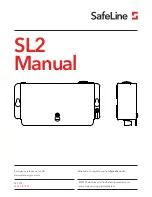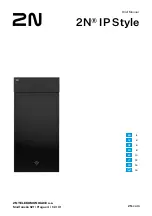
231
than is required for output refreshing and Unit servicing, Link Units (except
for Remote I/O Units) and all peripheral devices will be serviced again, one
type at a time, until program execution is completed.
From the second cycle on, servicing will be in the following cycle (with servic-
ing for the remaining time in any one cycle starting where servicing was left
off the previous cycle): PC Link Unit servicing I, PC Link Unit servicing II, pe-
ripheral devices, and then Host Link Unit servicing. Program execution com-
pletion will be checked between the servicing of each of these, and servicing
will be ended as soon as the program has been executed.
The following flowchart illustrates this portion of CPU operation.
Output refreshing
Program ended?
Remote I/O servicing
Peripheral servicing
Host Link Unit servicing
PC Link Unit servicing I
PC Link Unit servicing II
YES
NO
To input refreshing
Servicing returns to the next item following the last one to be processed.
Host Link Unit servicing
Peripheral servicing
Because Link Unit and peripheral device servicing is repeated until program
execution is completed, the time required for output refreshing and Unit serv-
icing will be the program execution time plus the time required to finish the
Link Unit or Peripheral Device servicing operation that is in process when
program execution has been completed. This is explained in more detail in
6-2
Calculating Cycle Time
.
Within the PC, the watchdog timer measures the cycle time and compares it
to a set value. If the cycle time exceeds the set value of the watchdog timer,
a FALS 9F error is generated and the CPU stops. WDT(94) can be used to
extend the set value for the watchdog timer.
Even if the cycle time does not exceed the set value of the watchdog timer, a
long cycle time can adversely affect the accuracy of system operations as
shown in the following table.
Watchdog Timer and Long
Cycle Times
Cycle Time
Section 6-1















































